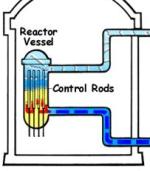
Fukushima and the Future of Nuclear Energy
It is still too early to say exactly how damaging the Fukushima incident will be for the nuclear power industry, but we can speculate on the potential impact on Europe. Prior to the explosion, a number of European countries had been bringing forward plans to develop new nuclear projects – what could happen now?
In the short-term, the impact is already clear. Safety checks for plants will be tightened up and life extension decisions are likely to be delayed; the talk from politicians will be of making sure existing plants are safe as opposed to discussing new units. But the longer-term impact will likely depend on how this current situation plays out.
Here are three scenarios to consider.
Scenario 1: The situation is contained in the next 48 hours, the media firestorm subsides, and the consensus is that the radiation impact is negligible.
This is the best case scenario and gives the greatest potential for nuclear. Even under this scenario, there is a significant chance that Angela Merkel decides not to risk the wrath of the German voters in state elections through the course of the year and reverses the life extensions granted in 2009. The Italian referendum on allowing new nuclear (scheduled for June) would likely be defeated, unless it is delayed. Even a delay may not be enough; the opposition left parties that are currently tipped as most likely to form the next government are broadly opposed to nuclear and could abandon a future referendum or effectively block plans for new plants. France would reaffirm its commitment to nuclear power, Central and Eastern European countries such as Poland, Romania, and the Czech Republic would push ahead with new units, following increased safety assessments. The delays caused would be minimal, given that many projects are currently on hold due to financing constraints and also lack of electricity demand caused by the economic downturn. Areva’s and other competitors’ pressurized water reactor (PWR) designs would gain an initial edge on boiling water reactors (BWRs).
Scenario 2: The situation is not controlled within the next 48 hours and critical radiation leaks are still a risk to the immediate surroundings. There is still no substantial evidence that the radiation will damage public health
The German closure program is re-instated and Italy is almost certain to be a no for nuclear. UK public opinion starts to swing against nuclear and the government brings forward the closure dates for older reactors. Concerted opposition in the UK deters utilities from bringing new projects forward, leading to further substantial delays. The private sector’s concern over the viability of nuclear power increases substantially, making it almost impossible for state utilities that lack capital funding to find it at a price that makes projects commercially viable. Technically, reactor designs will need to carry autonomous power systems protected from external damage such as terrorist attacks and tornados and be able to run for an extended period of time without grid supply or refuelling.
Scenario 3: The situation deteriorates to a full meltdown, drawing in technical emergency support from other nuclear countries. The risk to public health increases, with significant risk of contamination within a weather-influenced radius.
Nuclear projects indefinitely delayed across Europe, with even France reluctant to consider constructing any new plants. There is high political pressure on countries to close BWR reactors that are of the same age. Technically, BWRs become the focus of intense scrutiny compared with PWRs which use more internal safety loops amongst other features. Fusion projects ITer and HiPER would gain further momentum in the longer run but would face further safety scrutiny, which will further delay schedules. Research radiation absorbing materials, intelligent nanotech for specific use in a nuclear plant environment will be of increased interest, but nuclear power would still play a part of the overall global energy mix.
Of course all these scenarios do not consider such factors as the future price of carbon, climate change pressures or the potential discovery of new gas deposits, all of which could benefit or derail nuclear. One thing is certain though – the future of nuclear in Europe is once again in significant doubt.
Jonathan Robinson is a senior consultant in energy, environment, and building technology for Frost & Sullivan and Enguerran Ripert is a consultant at the business, research, and consulting firm.
Posted by Enguerran Ripert, Jonathan Robinson on Mar 17, 2011